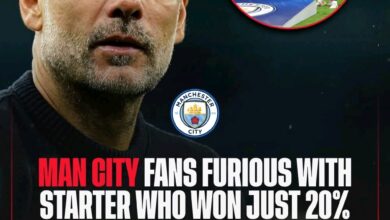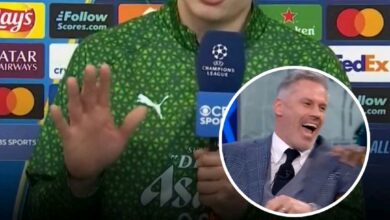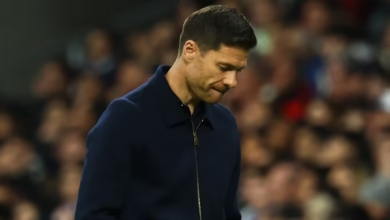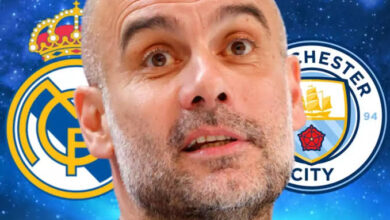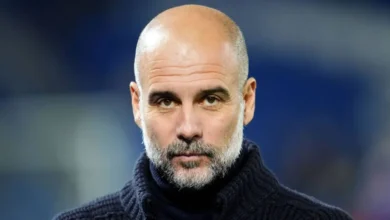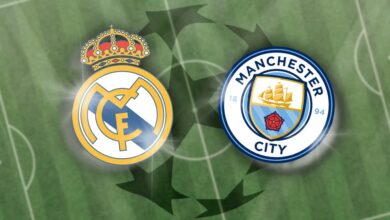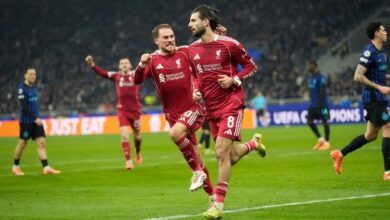Cole Palmer makes ‘one of the best’ claim about player Man City sold for just £10m

Manchester City’s academy has established itself as one of the premier talent factories in European football over the past decade. While the club’s unprecedented domestic success has been built largely on strategic recruitment of established stars, their youth development system has quietly produced a remarkable collection of talents now flourishing across the continent’s top leagues.
The most celebrated product from this development pipeline remains Phil Foden, the midfield maestro who has progressed from City’s youth ranks to become one of the world’s elite players. Foden’s trajectory reached new heights last season when he was crowned PFA Players’ Player of the Year, widely regarded as the most prestigious individual accolade in English football.
However, another City academy graduate has been making headlines and turning heads with his exceptional performances. Cole Palmer, whose decision to leave the Etihad for Chelsea in 2023 raised eyebrows at the time, has since blossomed into one of the Premier League’s most electric attacking talents. Palmer’s choice to pursue regular first-team football away from Pep Guardiola’s star-studded squad has been vindicated emphatically, with Arsenal legend Ian Wright among those praising the young Englishman’s courage in making the career-defining move.
In a recent interview with Sky Sports, the 23-year-old Palmer surprised many by singling out a fellow City academy graduate as one of the most talented players he has ever shared a pitch with. The subject of his extraordinary praise? Chelsea teammate Romeo Lavia, a player Manchester City sold to Southampton for just £10.5 million in 2022.
“I think he is one of the best midfielders I have ever played with, to be honest,” Palmer stated with conviction. “Everyone hasn’t seen it because he has been injured. Obviously, I knew him at City. I think everyone will realise soon, I think he will be one of the best midfielders in the world.”
Palmer’s assessment of Lavia’s abilities may seem surprising to casual observers, particularly considering the Belgian midfielder’s relatively low profile since his departure from the Etihad. However, those who have followed Lavia’s career closely recognize the exceptional talent that prompted Chelsea to invest significantly in his services following his single season at Southampton.
Lavia’s journey began in Belgium with Anderlecht’s youth academy before he caught the attention of Manchester City’s scouting network. Joining City’s elite development squad in 2020, Lavia quickly established himself as one of the academy’s most promising prospects. His technical security, tactical intelligence, and physical presence in midfield drew comparisons to established stars like Rodri and Fernandinho.
Despite his obvious potential, Lavia’s path to City’s first team remained obstructed by the world-class talent ahead of him in the pecking order. During his time at the Etihad, the Belgian made just two senior appearances – one in the FA Cup and another in the League Cup – before the club made the decision to sell him to Southampton in July 2022.
The £10.5 million fee received for Lavia appeared modest at the time, though City shrewdly included a buy-back clause and a substantial sell-on percentage in the agreement. This foresight would prove financially beneficial when Lavia’s subsequent move to Chelsea materialized just 12 months later.
At Southampton, Lavia immediately showcased the qualities that had made him so highly regarded at City. Despite being just 18 years old when he arrived at St. Mary’s, the Belgian established himself as a central figure in the Saints’ midfield, displaying a maturity and tactical understanding that belied his tender age.
His performances on the south coast, particularly a commanding display in Southampton’s victory over Chelsea, attracted attention from several Premier League giants. Despite Southampton’s relegation from the top flight in 2023, Lavia’s reputation remained intact, with his individual brilliance standing out amid the team’s collective struggles.
Chelsea’s pursuit of Lavia in the summer of 2023 highlighted the high regard in which he was held within elite football circles. The London club secured his signature for approximately £58 million, a significant investment that underscored their belief in his potential to become a cornerstone of their midfield for years to come.
Unfortunately for both Lavia and Chelsea, his time at Stamford Bridge has been severely hampered by a series of frustrating injuries. The Belgian has been restricted to just a handful of appearances since his arrival, preventing him from demonstrating the full extent of his abilities to the Chelsea faithful.
This lack of consistent playing time explains Palmer’s assertion that “everyone hasn’t seen it” when referring to Lavia’s exceptional talent. Having witnessed his compatriot’s capabilities both at Manchester City’s academy and during their limited time together at Chelsea, Palmer possesses insights into Lavia’s potential that the wider football public has yet to fully appreciate.
Chelsea’s medical team has taken a cautious approach with Lavia’s rehabilitation, recognizing that rushing a young player back from injury can have detrimental long-term consequences. The club’s investment in the Belgian represents a long-term strategy rather than a quick fix, with the 21-year-old viewed as a potential midfield anchor for the next decade.
When he has been available for selection, Lavia has offered glimpses of the qualities that prompted Palmer’s effusive praise. His spatial awareness, progressive passing, and ability to protect the defensive line have added valuable balance to Chelsea’s midfield. Moreover, his composure in possession and capacity to function effectively in congested areas mark him as a midfielder ideally suited to the demands of modern elite football.
While Lavia’s injury issues have proven frustrating for all parties, Chelsea’s coaching staff remain convinced of his exceptional potential. The club’s management has emphasized the need for patience, pointing to his youth and the natural development curve that all young players must navigate.
If Lava can overcome his physical setbacks and establish himself as a regular starter at Stamford Bridge, Palmer’s bold prediction about his teammate becoming “one of the best midfielders in the world” may yet prove prescient. The talent foundation certainly exists; now health and opportunity must align to facilitate his ascent to the game’s highest level.
Romeo Lavia and Cole Palmer represent just two examples of a broader trend that has seen numerous Manchester City academy graduates seek opportunities elsewhere. This exodus of young talent from the Etihad raises fascinating questions about the balance between development success and first-team integration
The caliber of players who have emerged from City’s academy system over the past decade is remarkable. Beyond Foden, Palmer, and Lavia, the list includes international stars like Michael Olise, Jadon Sancho, Brahim Diaz, and Jeremie Frimpong. Each of these players has gone on to establish themselves at elite European clubs, vindicating their decisions to leave City in search of regular first-team football.
Morgan Rogers represents one of the more recent examples of this phenomenon. The versatile attacker left City for Middlesbrough in 2023 before securing a move to Aston Villa in January 2025. His performances under Unai Emery have been exceptional, with former England manager Sam Allardyce publicly stating that City made a “mistake” in allowing him to leave.
Michael Olise never actually represented City’s first team, but his development in their academy system laid the groundwork for his subsequent success at Reading and Crystal Palace. The French youth international’s exceptional performances at Palace earned him a €60 million transfer to Bayern Munich last summer, where he has continued to flourish as one of Europe’s most exciting wide attackers.
Liam Delap, son of former Stoke City player Rory Delap, has carved out his own identity through his performances for Ipswich Town this season. The powerful striker’s combination of physical presence and technical refinement has attracted interest from several Premier League clubs, with a significant summer transfer widely anticipated.
Brahim Diaz’s journey since leaving City has been particularly noteworthy. After joining Real Madrid in 2019, the Spanish international enhanced his reputation during a productive loan spell at AC Milan before returning to the Santiago Bernabéu to become an important squad member for the European champions.
The departures of these talents from Manchester City reflect the extraordinary competitive environment at the club under Pep Guardiola. With the first-team squad consistently stacked with world-class players in every position, breaking through from the academy represents an enormous challenge, even for the most gifted prospects.
City’s technical director Txiki Begiristain has repeatedly emphasized that the club takes pride in developing players who succeed elsewhere. From a business perspective, the sales of academy graduates like Palmer, Lavia, and Sancho have generated substantial revenue while requiring minimal investment compared to external recruits.
However, there remains a sense that City may have missed opportunities to integrate more homegrown talent into their first-team setup. Palmer’s explosive development at Chelsea and Lavia’s potential emergence as an elite midfielder raise questions about whether Guardiola’s preference for experienced, established stars has occasionally come at the expense of nurturing the club’s own exceptional prospects.
While many academy graduates have flourished after leaving the Etihad, Manchester City can point to several success stories within their current squad. Phil Foden stands as the crown jewel of their youth development system, having progressed from ballboy to becoming one of the Premier League’s most devastating attacking midfielders.
Foden’s trajectory represents the ideal academy pathway that City hoped would become more common. After being carefully integrated into the first-team environment over several seasons, the Stockport-born playmaker has developed into a pivotal figure in Guardiola’s side. His evolution from promising talent to world-class performer has validated the club’s development philosophy.
Rico Lewis represents another academy success story currently making an impact at the Etihad. The versatile defender has established himself as a valuable squad member under Guardiola, with his tactical intelligence and technical security making him ideally suited to the Catalan coach’s demanding system.
When Lewis broke into the City first team, Guardiola described him as “one of the best young players I have ever seen,” highlighting the special qualities that have helped the youngster become an important part of the squad despite fierce competition from established international defenders.
These success stories provide important context when evaluating City’s academy model. While many talented players have departed, the club has successfully integrated some homegrown talents into their elite first-team environment. The challenge remains balancing the immediate demands of competing for top honors with the longer-term benefits of developing and integrating academy prospects
Pep Guardiola has consistently maintained that he does not block the path of any young player who shows sufficient quality and application in training. The Catalan coach points to his track record of promoting youth at Barcelona, Bayern Munich, and now Manchester City as evidence of his willingness to trust young talent.
“The door is always open for our academy players,” Guardiola stated earlier this season. “But the standard to play for Manchester City is exceptionally high. We cannot lower our demands because we are competing against the best teams in the world.”
This uncompromising approach has undoubtedly contributed to City’s remarkable success under Guardiola’s leadership. However, it has also created an environment where many gifted young players calculate that their development might be better served elsewhere.
The departures of players like Palmer and Lavia illustrate the difficult decisions that academy graduates must make. Both recognized their pathway to regular first-team football at City was blocked by established stars, prompting them to make the brave choice to pursue opportunities elsewhere.
Guardiola has never expressed regret about these departures, consistently maintaining that the club makes decisions based on what they believe is best for both the team and the individual players. This pragmatic approach aligns with City’s broader philosophy of balancing competitive success with sustainable development
From a business perspective, Manchester City’s academy system has proven remarkably effective. The club’s investment in state-of-the-art facilities and elite coaching has yielded significant returns through the sales of academy products.
When Palmer left for Chelsea in a deal worth up to £42.5 million, City secured a substantial profit on a player they had developed internally. Similarly, the initial £10.5 million received for Lavia, supplemented by additional income from his subsequent transfer to Chelsea, represented excellent business for a player who made minimal first-team contributions.
These transactions exemplify City’s shrewd approach to player trading. By identifying when a pathway to the first team appears limited, the club has repeatedly demonstrated a willingness to cash in on academy assets rather than retaining them as squad players.
This strategy has helped City maintain compliance with financial regulations while continuing to invest heavily in established stars. The sales of academy products like Palmer, Lavia, Sancho, and others have generated revenue that partially offsets the club’s substantial expenditure on ready-made talents.
However, the financial equation extends beyond simple transfer fees. The opportunity cost of losing potential world-class performers must also be considered. If Palmer continues his meteoric rise and Lavia fulfills his immense potential, the long-term sporting and commercial value they could have brought to City may ultimately exceed the transfer fees received.






